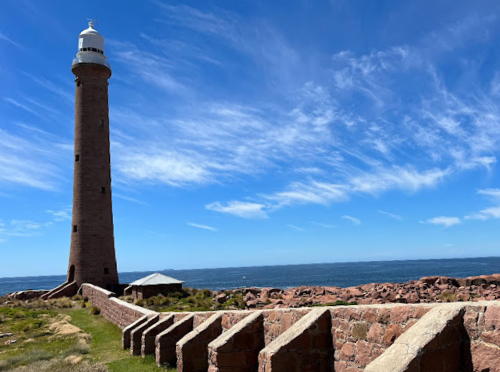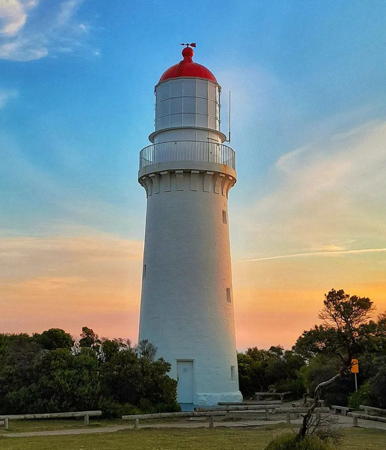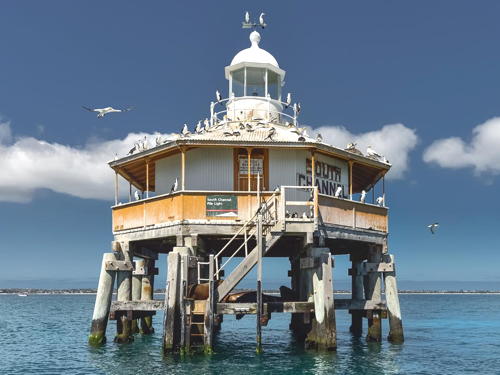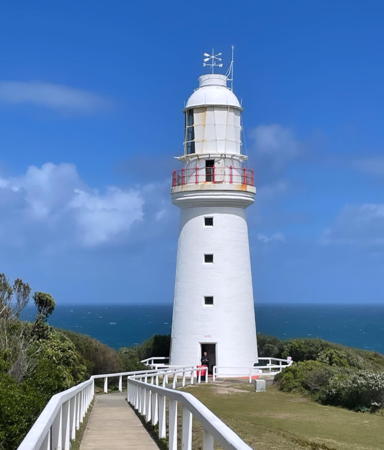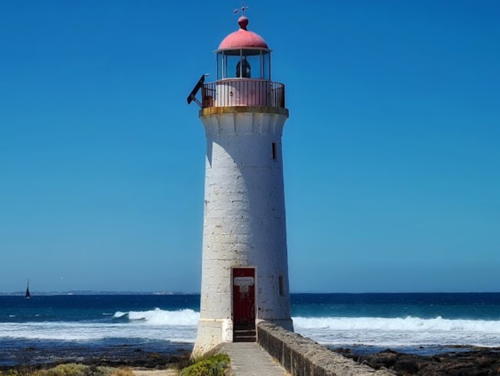The independent Commonwealth of Australia occupies the entire Australian continent, the island of Tasmania, and numerous smaller islands. British exploration and settling of the continent began late in the 1700s, with the first colony established in the Sydney area in 1788. By the 1850s there were six British colonies, including New South Wales and Queensland in the east, Victoria and South Australia in the south, Western Australia in the west, and Tasmania off the south coast. The Commonwealth was formed on New Years Day 1901 as a federation of the six colonies. Australia is both the smallest continent and the sixth-largest country in the world, with a population of about 26 million.
The state of Victoria is located in the southeastern corner of Australia and includes the country's second largest metropolitan area, Melbourne. Victoria is the smallest mainland Australian state but it has a dangerous coastline that required about 20 historic light stations. The eastern two thirds of the coastline faces south, looking across the Bass Strait to Tasmania, and the western third faces southwest onto the Southern Ocean.
Victoria is divided into 79 local government areas, including 39 shires, 39 urban or rural cities, and one borough.
Lighthouse management: coastal aids to navigation in Australia are maintained by the Australian Maritime Safety Authority (AMSA). Harbor aids are maintained by Ports Victoria, formed in 2021 by merging the former Victorian Ports Corporation (Melbourne) (VPCM) and Victorian Regional Channels Authority (VRCA). Many of the light stations are now parklands managed by Parks Victoria.
Special thanks are due to Heather Craven for her photos and comments on the lighthouses of her native Victoria.
ARLHS numbers are from the ARLHS World List of Lights. Admiralty numbers are from volume K of the Admiralty List of Lights & Fog Signals and U.S. NGA numbers are from NGA Publication 111.
- General Sources
- Victorian Lighthouses
- The section of the Lighthouses of Australia site devoted to Victoria lights.
- AMSA Heritage Lighthouses
- An interactive map links to information and photos for the major AMSA lighthouses.
- Lighthouses and Lightvessels in Australia - Victoria
- Index to Wikipedia articles; most include photos.
- Online List of Lights - Victoria - Gippsland Lakes, Bass Strait, and South Coast
- Photos by various photographers posted by Alexander Trabas. Most of the Victoria photos are by Michael Boucher, Erich Hartmann, Günther Hess, or Rainer Arndt.
- Grant and Tracey's Lighthouse Page - Victoria
- Photos of most of the lighthouses posted by Grant Maizels.
- World of Lighthouses - Victoria
- Photos by various photographers available from Lightphotos.net.
- Leuchttürme Australiens und Ozeaniens auf historischen Postkarten
- Historic postcard images posted by Klaus Huelse.
- GPSNauticalCharts
- Navigation chart for the coast of Victoria.
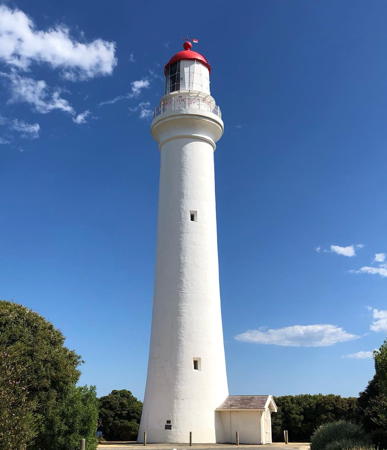
Split Point Light, Airey's Inlet, February 2024
Instagram photo by Ian Row
